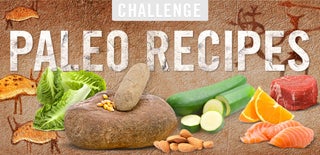Introduction: Make Citrus Powder
I love unusual ingredients and ALL citrus fruits, so when I came across a few mentions of citrus powder on the internets, I knew I had to try to make some. In addition to a few meyer lemons that a co-worker gave me, I added kumquats, tangerines, valencia oranges, key limes, blood oranges, and grapefruits to my 'to be powdered' list.
This turned out to be an easy process that yielded surprising and super delicious results.
So flavor explorers follow me...
Step 1: Pick Your Citrus
I wanted to try a bunch of different kinds of citrus, including several varieties of oranges, to see how different they would be/taste. Due to the large amount of oven real estate required to make these, I would recommend starting with just 2-3 choices. (Making all these different kinds took a few rounds (read: days) of oven dehydrating.)
Here's my list again in order of personal preference:
- valencia orange
- meyer lemon
- key lime
- kumquat
- tangerine
- blood orange
- grapefruit
Buy 2-3 of each of your choices, unless you choose kumquats, then you'll need 14-16.
Step 2: Prep Work
Remove stickers/labels and thoroughly wash all your citrus.
Line as many baking pans with parchment paper as will fit in your oven. (FYI I had two ovens to work with.)
Step 3: Get Low
Turn your oven on to it's lowest possible setting. 150 degrees F is ideal.
Step 4: Slice 'Em Up
Using a mandolin or a very sharp chef's knife, slice up all your fruit as thinly as possible.
If you're using a knife like I did, cut a small slice off the side of each fruit, so that it can sit flat on the table, offering more stability while slicing. And please be sure to use proper cutting techniques. (I describe this in Step 2 of my 'How To Chop An Onion' instructable.)
Remove any large seeds and discard the end cut offs.
Step 5: The Layout
Lemons, limes, and kumquats will dehydrate the fastest, so it's a good idea to keep those together on pans, separate from the oranges and grapefruit. That way you can remove them when they're done and leave in the others to dehydrate further.
Step 6: Now We're Cooking With Gas!
If you have a dehydrator at home, feel free to use it. Mine wasn't big enough to handle the amount I wanted to make, so I chose to use the oven instead.
Here are the oven drying times (at 150 degrees) for the different citrus fruits:
- kumquat, lemon, and lime = 12 hours
- oranges = 20 hours
- grapefruit = 20-24 hours
If the lowest temp your oven can go is closer to 175 or 200, it will cut down on cooking time, but be careful not to let the slices get too brown or they will lose some flavor and potentially taste burnt-ish. (The lemons will naturally look a little brown.) The lower temp the better for dehydrating.
Prop the oven door open with a dishtowel or folded silicone hot mat to allow the moisture to escape and keep some air flowing.
Step 7: Their Post-Cook Look
All the slices should be completely dry. If they sit out too long before you grind them, the humidity in the air can make them slightly sticky. If this happens, just pop them back in the oven on low for a few minutes.
Step 8: Makin' the Pow Pow
Using a clean coffee grinder or spice mill, grind up the dry slices in small batches, one type at a time.
Add 1/2 tsp of sugar and a pinch of salt to each batch of milling. (like pictured) The sugar counteracts the bitterness of the pith, and the salt helps bring out the flavor even more.
Use a small sieve to filter out the chunks and bits that didn't grind properly. Set those bits aside and once you've ground and sieved all of one type of citrus, you can put all those chunks back in the grinder and give them one more go + sieving. Either discard the last stubborn bits or save them to add to a stew or soup.
Immediately after finishing each citrus type, put them in airtight storage containers to keep the air moisture out. Spice or canning jars work great.
Step 9: How to Use Your Powders
I myself am still exploring all the ways to use these, but here are a few ideas to start with:
- mix with sugar or salt to rim cocktail glasses
- sprinkle on salads
- sprinkle on ice cream and berries
- fold into whipped cream or mix in icing
- add to rubs for chicken and seafood
- dust cookies and muffins
Let me know in the comments section below if you have used them for anything else or even just have ideas about what might work!
Happy cooking!

Participated in the
Meat Contest

Participated in the
Paleo Recipe Challenge













